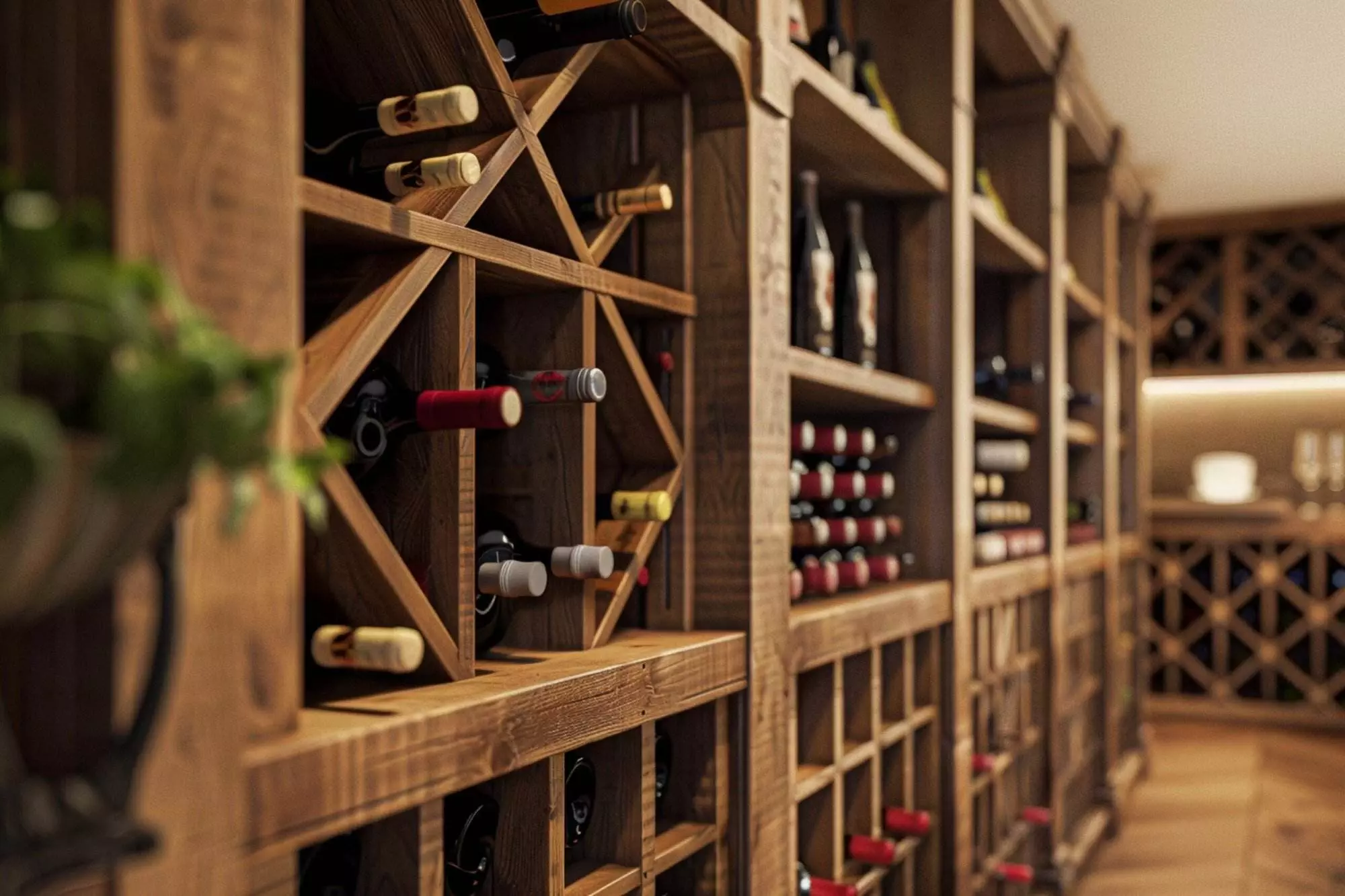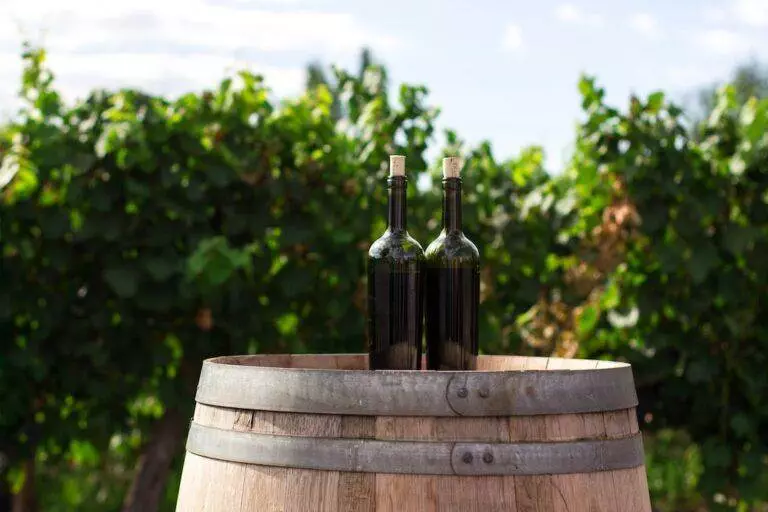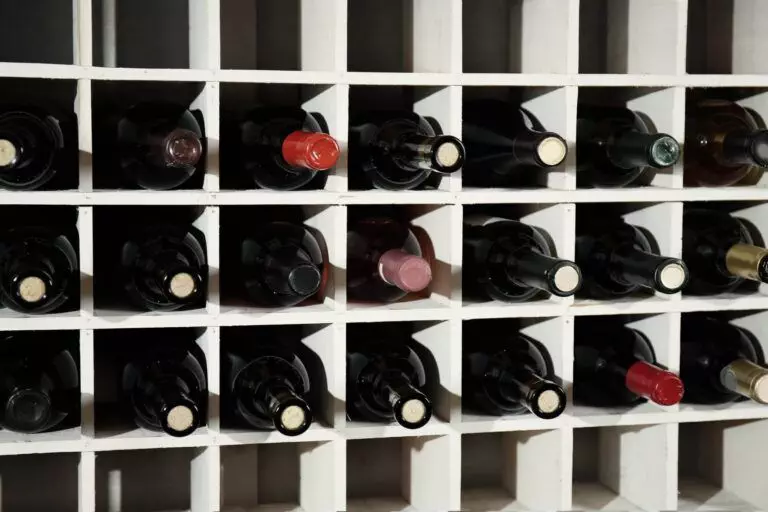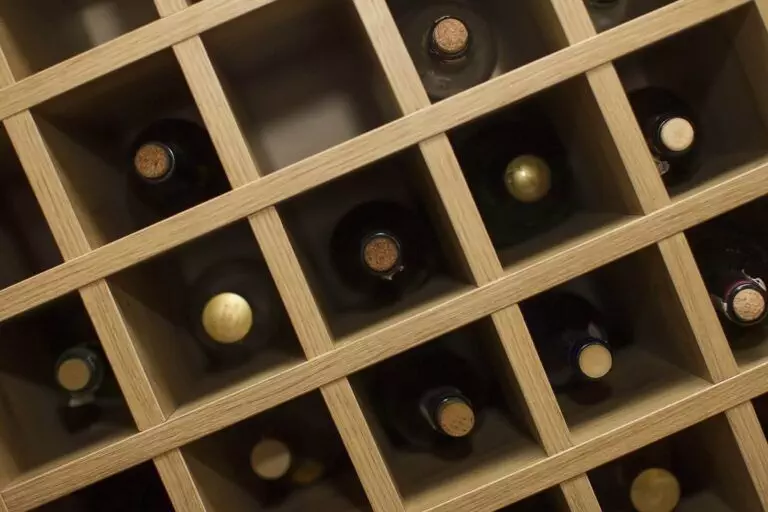Wine Hardware Answers: Do Wine Racks Need To Be Tilted?
Wine Rack Functionality Explained
Wine racks play a crucial role in the proper storage and organization of wine bottles. They are designed to keep the bottles in a stable and secure position, preventing them from rolling or tipping over. By storing wine bottles horizontally, wine racks help ensure that the cork remains in contact with the wine, preventing it from drying out and allowing the wine to age properly.
Moreover, wine racks provide a convenient and efficient way to store and display your wine collection. They can be customized to fit any space, whether it’s a small countertop or a dedicated cellar. With various materials and designs available, wine racks not only serve a functional purpose but also add aesthetic appeal to any room.
Overall, using wine racks is essential for maintaining the quality and longevity of your wine collection. It ensures proper storage conditions, easy access, and visually pleasing presentation. Whether you choose to tilt your wine rack or not, investing in a high-quality wine rack from Wine Hardware is a wise decision for any wine enthusiast.
Understanding the purpose of wine racks
Wine racks are designed to provide a stable and secure storage solution for wine bottles. They ensure that the bottles are held horizontally, allowing the cork to stay in contact with the wine. This position prevents the cork from drying out and helps the wine age properly. Wine racks also offer a convenient way to organize and display your wine collection. With various designs and materials available, they add both functionality and aesthetic appeal to any space. Whether it’s a small countertop or a dedicated cellar, wine racks are essential for maintaining the quality of your wines.



Benefits of proper wine storage
Proper wine storage offers several benefits for wine enthusiasts. Firstly, it ensures that wines age gracefully by maintaining the ideal temperature, humidity, and light conditions. This prevents oxidation and preserves the delicate flavors and aromas of the wine. Secondly, proper storage prevents cork drying, which could lead to spoilage or leakage.
Additionally, organizing wine bottles in a wine rack allows for easy accessibility and minimizes the risk of damage or breakage. Lastly, proper storage showcases your wine collection, enhancing its aesthetic appeal and adding a touch of sophistication to your space. By investing in a high-quality wine rack from Wine Hardware, you can reap these benefits and enjoy your wines to their fullest potential.
Factors to Consider
When it comes to wine racks, there are several factors that wine enthusiasts need to consider. One important factor is the material of the wine rack. Different materials, such as wood, metal, or acrylic, can affect the stability and durability of the rack. It’s essential to choose a material that complements your space and provides adequate support for your wine bottles.
Another crucial factor to consider is the size of the wine rack. The size should be determined by the number of bottles you plan to store and the available space in your home. It’s important to choose a wine rack that can accommodate your current collection and allow room for future additions.
Additionally, the design and aesthetic appeal of the wine rack should be taken into account. Wine racks come in various styles and designs, ranging from traditional to modern. Selecting a rack that matches your personal taste and enhances the overall decor of your space can provide a visually pleasing display.
Lastly, it is important to consider the tilt or angle of the wine rack. While there is ongoing debate about whether wine racks need to be tilted, some experts believe that tilting can help keep the cork moist and prevent it from drying out. However, others argue that modern corks, along with proper storage techniques, can eliminate the need for tilting.
Ultimately, when choosing a wine rack, it is essential to consider factors such as material, size, design, and personal preferences. By carefully considering these factors, you can select a wine rack that not only meets your functional needs but also enhances your overall wine storage experience.
Importance of tilting wine racks
Tilting wine racks can play an important role in maintaining the quality of your wine collection. The slight angle helps keep the cork moist, preventing it from drying out and potentially compromising the flavor and aroma of the wine. This is particularly important for wines with natural corks, as they rely on a tight seal to preserve their integrity. By tilting the wine rack, you promote optimal cork contact with the wine, ensuring that it remains in top condition over time. While there is ongoing debate on this topic, many wine enthusiasts and experts prefer to tilt their racks for added peace of mind.
Alternatives to tilted wine racks
There are alternative methods available for storing wine that do not require tilting wine racks. One option is using wine storage cabinets or coolers that provide a controlled environment for your bottles. These units typically have built-in humidity control features, eliminating the need for tilting.
Another alternative is utilizing specialty wine storage boxes. These boxes are designed to hold wine bottles securely in an upright position, preventing the corks from drying out. They are ideal for short-term storage or for transporting your bottles.
For those with limited space, wall-mounted wine racks can be a great option. These racks allow you to store your bottles vertically while still providing easy access. While they don’t offer the same benefits as tilted racks, they can still help maintain the quality of your wines.
Lastly, investing in wine preservation systems, such as vacuum pumps or inert gas cans, can help extend the shelf life of opened bottles. By removing air from the bottle or replacing it with a protective gas, these systems can slow down oxidation and preserve the flavors and aromas of your wine.
While tilted wine racks are commonly used and have their advantages, these alternatives offer viable solutions for those looking for different storage options to suit their needs. It’s important to assess your specific requirements and consider factors like space availability, budget, and the length of time you intend to store your wines.
Opinion from Experts
Expert perspectives on wine rack tilting
Experts in the field of wine storage have varying opinions on the necessity of tilting wine racks. Some argue that tilting wine racks are essential for long-term storage to keep the cork moist and prevent air from entering the bottle. This can preserve the quality and flavor of the wine over time. Others, however, believe that modern cork closures and advancements in bottle design reduce the risk of cork drying and subsequent oxidation. They emphasize temperature and humidity control as more critical factors. Personal preferences and wine characteristics should be considered when deciding whether to tilt wine racks. Consulting with professionals like sommeliers or wine storage specialists is recommended for tailored advice.
Common misconceptions about wine rack angles
There are several common misconceptions regarding wine rack angles that should be clarified. One misconception is that all wines need to be stored at an angle to keep the cork moist. While this was once true, modern cork closures and bottle designs have significantly reduced the risk of cork drying and subsequent oxidation. Another misconception is that tilting wine racks are necessary for all types of wines. In reality, certain wines may benefit from being stored upright, such as sparkling wines or wines with synthetic closures. It is important to consider the specific characteristics of each wine before deciding on the appropriate storage position.
Types of Wine Racks
Exploring different wine rack designs
There are various types of wine racks available, each with its own unique design and functionality. One popular option is the traditional wooden wine rack, which adds a classic and elegant touch to any wine storage area. Metal wine racks, on the other hand, offer a sleek and modern look. These racks are often customizable and can be configured to fit any space.
Another type of wine rack is the stackable or modular rack. These racks are versatile and can be easily expanded or reconfigured as your wine collection grows. They come in various materials such as wood, metal, or plastic.
For those who prefer a more contemporary style, wall-mounted wine racks are a great choice. These racks save floor space and create an eye-catching display for your favorite bottles. Additionally, there are also countertop wine racks that provide convenient access to your most frequently enjoyed wines.
How rack type affects tilting necessity
The type of wine rack you choose can influence the necessity of tilting. Traditional wooden wine racks usually have individual slots for each bottle, which naturally keeps them tilted at a slight angle. This design helps keep the cork moist and prevents potential air leakage.
However, other types of wine racks, such as stackable or modular racks, may not have built-in tilting features. In these cases, it is important to consider the closure type of your wines and whether they require specific storage conditions.
Ultimately, the decision to tilt or not to tilt depends on factors like the closure type, bottle design, and personal preference. It is crucial to assess these factors and choose a wine rack that suits your specific storage needs while ensuring the quality and longevity of your wines.
Practical Tips
Maintaining wine quality with or without tilting
Proper maintenance is crucial for preserving the quality of a wine collection, whether or not the wine rack requires tilting. Wine Hardware advises keeping the rack in a cool and dark environment to minimize light and heat exposure. It is important to avoid storing wines near strong odors or areas with temperature fluctuations. Regular inspections for damage or instability are recommended, making necessary repairs or adjustments promptly. Monitoring humidity levels using a hygrometer is also essential, aiming for a range of 50% to 70% to prevent cork drying. If access to a temperature-controlled cellar is not possible, investing in a wine chiller or storage cabinet can ensure consistent temperatures.
Proper storage techniques for wine racks
Proper storage techniques are essential for maintaining the quality of wine racks. Wine Hardware recommends storing bottles horizontally to keep the corks moist and ensure a tight seal. This prevents air from entering and spoiling the wine. The temperature should be kept consistent, ideally between 50°F and 59°F to avoid fluctuations that can harm the wine. It is also crucial to maintain a humidity level between 50% and 70% to prevent cork drying. Regular inspections should be conducted to identify any damage or instability, and prompt repairs should be made if necessary. Additionally, wines should be stored away from strong odors or areas with excessive light exposure to preserve their flavors and aromas. Following these storage techniques will help prolong the lifespan and quality of a wine collection.
Conclusion
Wine racks serve a crucial purpose in maintaining the quality and longevity of wine collections. While tilting wine racks can help keep corks moist, it is not always necessary. Different types of wine racks have varying functionality, and expert opinions differ on the importance of tilting. Ultimately, the key is to ensure proper storage techniques are followed, including storing bottles horizontally, maintaining consistent temperatures and humidity levels, conducting regular inspections, and avoiding excessive light exposure and strong odors. By adhering to these practices, wine enthusiasts can preserve the flavors and aromas of their prized bottles for years to come.
Final thoughts on tilting wine racks
Final thoughts on tilting wine racks
While the debate on tilting wine racks continues, it is important to consider the specific needs of your wine collection. Tilting wine racks can help keep corks moist and prevent them from drying out, but it may not be necessary for all types of wines. Factors such as the type of cork used and the storage conditions can also play a role in determining whether tilting is required.
The key is to prioritize proper storage techniques over solely relying on tilting. Maintaining consistent temperatures, humidity levels, and avoiding excessive light exposure are crucial factors in preserving the quality of your wines. Regular inspections and adherence to best practices, such as storing bottles horizontally, will go a long way in ensuring the longevity of your collection.
Ultimately, the decision to tilt or not to tilt your wine rack should be based on your specific circumstances and preferences. Consulting with experts in wine storage, such as Wine Hardware, can provide valuable insights tailored to your needs. By following their recommendations and implementing sound storage practices, you can protect and savor your wines for years to come.
Key takeaways and recommendations from wine experts
- Prioritize proper storage techniques over solely relying on tilting wine racks.
- Consistently maintain optimal temperatures and humidity levels to preserve wine quality.
- Avoid excessive light exposure to prevent damage to the wine.
- Regularly inspect your wine collection for any signs of spoilage or cork issues.
- Consult with experts, such as Wine Hardware, for personalized advice specific to your wine collection.
- Implement best practices, such as storing bottles horizontally, to ensure the longevity of your wines.







